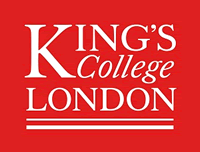The global research into therapeutics for neurodegenerative diseases is rapidly generating new candidate therapeutic approaches, especially new small molecules and gene therapy vectors. However, the bottleneck in translating these to clinical trials is the need to examine the efficacy and specificity of these candidate therapies in a human system that mimics the neuromuscular environment that is affected in ALS. For this purpose, this project will combine several approaches that are rarely employed together: transcriptomics, systems and computational biology with microfabrication-based solutions to model patient-derived neuromuscular circuits. Induced pluripotent stem cells (iPSCs) from ALS patients containing a mutation in an RNA-binding proteins along with CRISPR-corrected isogenic controls will be used to generate the circuits, and transcriptomic methods to study protein-RNA networks with crosslinking and immunoprecipitation (iCLIP) and their effects on mRNA translation with ribosome profiling (Ribo-seq) followed by advanced computational modelling. Thereby the project will comprehensively characterize the capacity of therapies to decrease the mutation-driven transcriptomic perturbations in protein-RNA networks, while also assessing the potentially unintentional side-effects of therapies on the transcriptome.
The project will integrate expertise from three partners. The Ule lab that developed iCLIP, established a highly sensitive Ribo-seq and associated computational software, and keeps developing it further and integrating with functional transcriptomics. The Lieberam group established a compartmented co-culture system composed of motor neurons, glia and myofibers directly derived iPSCs. The commercial partner Goodwright is a software SME that is focused on developing new platforms for analysis of sequencing data and its visual interpretation, integration and management.
Funding Notes:
The MRC DTP only offer 4-year fully funded studentship awards; including a stipend, tuition fees, research training and support grant (RTSG), and a travel and conference allowance.
Stipend: Inside London stipend rate for academic year 22/23 is £22,168. This is a tax-free payment made to the student.
Tuition fees: The studentship award covers the full tuition fee amount per year, including any international fee rate.
Research training and support grant (RTSG): £6,400 per year. Can also be known as bench fees, this is a contribution towards consumable costs of training research students.
Travel and conference allowance: £300 per year. This is a contribution to the costs of attending scientific conferences, workshops or visits to collaborators.
Flexible Supplement: Available to students funded by the MRC, this can help fund a wide range of research and training activities.

 Continue with Facebook
Continue with Facebook



